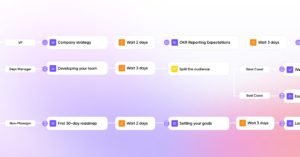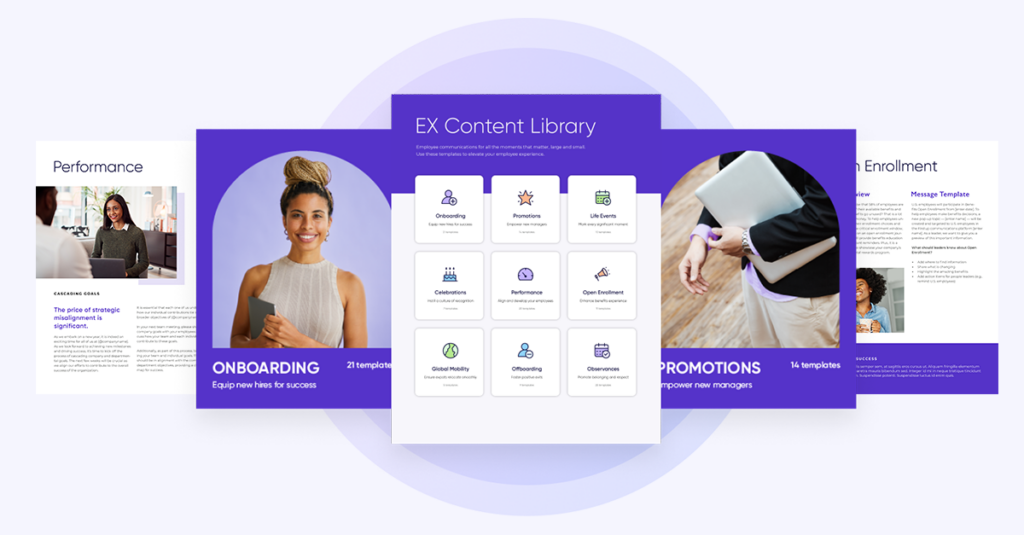47.4 million people in the U.S. quit their jobs – voluntarily – in 2021. In a nation of about 159 million workers, that’s a really large percentage of people who decided that what they were doing for a living wasn’t what they wanted.
While the pandemic may have spurred employees to consider their options during what is now called The Great Resignation, there are several top reasons why so many started seeking out new opportunities beyond just Covid. And between a combination of the continuing labor shortage, the availability of remote work for many jobs that used to require being in a physical office, and nationwide digital recruiting, that trend continues to affect the labor market as we move through 2022.
With millions of Americans still looking into quitting their jobs and doing something else, it’s important to understand their reasons in order to increase the retention rate at your company. Keeping your good employees on board not only helps you keep recruiting costs low, but also keeps your institutional knowledge intact.
Let’s take a look at what’s driving employee turnover by examining the top four reasons people are leaving their jobs.
Reason #1: Pay and benefits
According to Pew Research, 63% of employees who quit their jobs in 2021 cited low pay as the top reason, and that’s for both blue and white-collar employment sectors alike. Wage stagnation has led to just a 32% rise in wages since 1990 while the cost of goods has gone up 117.07%.
Workers, seemingly, have had enough. Labor is still in high demand across most sectors, so job seekers and employees have more leverage than ever in demanding better pay and benefits. If they aren’t happy with what they are currently earning, there are (most likely) bigger and better opportunities for them.
Because of this, if employers want to recruit and retain quality employees they need to be better informed about appropriate pay scales for open positions as well as get creative with what benefit packages they can offer candidates.
Reason #2: Lack of communication
Have you ever worked anywhere where communication with management was lacking and your concerns were going unheeded? Turns out, millions of employees have had the same experience.
Firstup recently commissioned some research of over 23,000 workers that highlighted the importance of having a robust internal communications strategy in place, finding that 33% of employees don’t even feel recognized – never mind heard – within their own company.
The difficulty, of course, has been staying connected and communicating with a staff that has gone remote. Many companies are not prepared for this “new normal” and as such have left many employees feeling isolated and in the dark. This is not good for morale, and organizations are going to have to do more to up their communications game.
Here are a few tips and suggestions for doing just that:
- Set expectations through a strong onboarding strategy that gives new employees a clear idea of the company’s culture and sense of purpose, immediately.
- Make it easier for leaders to reach employees, and vice-versa.
- Enable employees to receive relevant communications and be able to access important information as quickly as possible.
- Utilize a workforce communication platform like Firstup, which can align your corporate message, connect remote employees, deliver personally relevant company news, critical updates, to-dos and reminders to wherever they are, and enable two-way conversations between your people and your company.

Reason #3: Feeling burnt out and underappreciated
Another big reason people quit their jobs is they are feeling overworked and overwhelmed. After all, there’s only so much a person can handle! Despite some employers starting to offer mental health programs, employees are not fully satisfied and are feeling burnt out. Stress levels are taking their toll, with burnout rates now at a record high of 70% and nearly half of U.S. workers are suffering from mental health issues.
According to CNBC, workers are finding that the shift in leverage in the labor market is helping them put themselves first. Whether jumping to new opportunities, trying to make a side-gig become full-time, or just taking a break, employees are trying to remedy their struggle with work/life balance.
The lack of available workers has also contributed to the mental health crisis, as it’s made life more difficult for those still working every day. Longer shifts, covering multiple positions, and an ending to remote work options means that some employees are working more hours for the same pay while feeling underappreciated, as well as spending more time commuting to work – something many of them hadn’t missed at all.
If you are looking for some advice on helping those employees who are feeling burnt out and/or underappreciated, here are five ideas to consider when overhauling your wellness and mental health programs.
Reason # 4: Poor company culture
“Company culture” may, at times, seem like the newest buzzword thrown about in the news, but, in fact, it’s one of the most important things that determine how employees feel about their employer and their job.
Poor company culture can consist of several different factors, including a lack of corporate morals or values, unacceptable treatment of employees, the use of outdated technology, and micromanagement or bullying, in addition to low pay and weak benefit packages. Workers at these companies are often burnt-out and miserable, just barely doing enough to get by until they find alternative employment.
Positive company culture helps employees feel more connected to your business and purpose, and they are more likely to stay at a job and be more productive. For tips on how to get started on building a better company culture and get an accurate picture of what your employees are really experiencing, check out the Getting Insight into the Real Experience of your Employees episode of our Cruising Altitude podcast, as well as our blog post 7 ways to build a happier workforce.
Conclusion
Whether low pay, overwork, poor communication, or negative perceptions of a company’s culture, the fact remains that employees are (still) quitting their jobs at a record pace. It’s up to you as an employer to work on putting strategies in place that will not only retain your current employees but also attract new ones.
The digital employee experience platform from Firstup helps you put people first by reaching, connecting, and engaging every worker, everywhere. Learn how we can help you create an experience that meets the needs of every worker.
Download PDF








